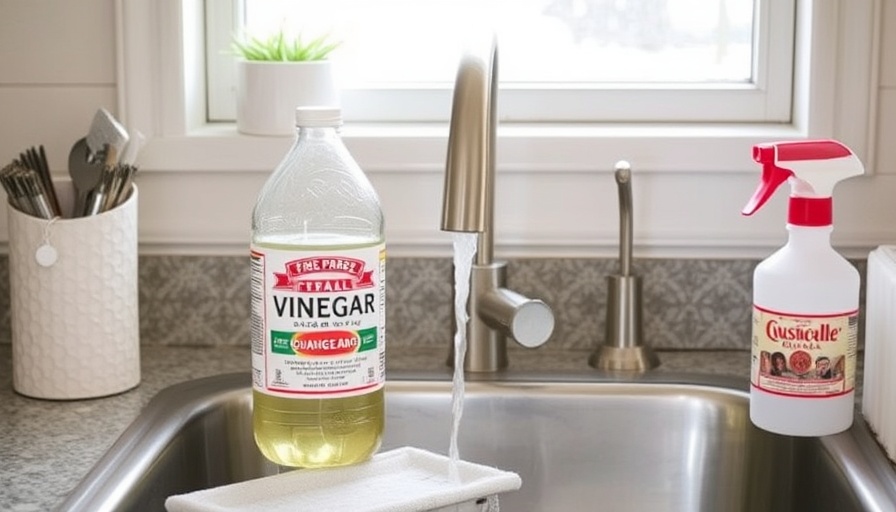
Harnessing the Power of Vinegar for a Healthier Home
In our quest for healthier living, many of us are turning to natural solutions around the house. One of the most versatile and cost-effective options at our disposal is distilled white vinegar. This common pantry staple not only cuts through grime but also contributes to a toxin-free environment, making it a win-win for families looking to maintain cleanliness without sacrificing health.
Understanding Vinegar's Cleaning Potential
What makes vinegar such an effective cleaning agent is its acetic acid content, which can dissolve dirt, grease, and grime. Alongside its affordability, it poses environments-friendly options, a significant attraction for environmentally conscious residents of Pearl City. You might worry about the pungent aroma vinegar gives off, but this dissipates as it dries. You can even add a dash of your favorite essential oil for a pleasant scent, further enhancing your cleaning routine.
Effective Cleaning Uses of Vinegar
From tackling stains to cleaning mirrors, vinegar has numerous applications:
Stain Remover Extraordinaire
Have children or pets? Stains become an inevitable part of life. An excellent remedy is to apply undiluted vinegar directly onto stains before washing. This technique works wonders, especially on white clothes and carpets afflicted by wine and tomato sauce spills. For persistent stains, combining vinegar with baking soda can yield even greater results.
Windows and Mirrors Sparkling Clean
Want streak-free surfaces? Create a homemade glass cleaner by mixing one part vinegar with three parts water in a spray bottle, adding drops of essential oil if desired. It’s an effective alternative to commercial cleaners and doesn’t contain harmful chemicals.
Mold Removal Made Easy
A mix of one part borax to four parts vinegar can eliminate mold from your home. Spray it on affected areas and wipe it clean after letting it sit for about an hour. Remember, while vinegar kills the visible mold, persistent issues may signal underlying problems. Always investigate further if you find mold in your dwelling.
Avoiding Common Mistakes in Vinegar Cleaning
While vinegar is an excellent cleaning agent for many surfaces, it's crucial to acknowledge its limitations. For example, vinegar can harm finished wood, so take care when utilizing it on your hardwood floors. It's also detrimental to natural stone countertops and grout if used too liberally. Using distilled white vinegar properly is vital in achieving a clean, sparkling home without unintended consequences.
Cleaning with Confidence: The Dos and Don’ts of Vinegar
- Do: Use vinegar to clean countertops, stainless steel appliances, and freshen your laundry.
- Don’t: Clean stone surfaces or use on rubber components in appliances like dishwashers and washing machines.
The Future of Home Cleaning: Embracing Natural Solutions
As more households aim for sustainable living, the shift toward natural cleaning products like vinegar reflects changing consumer preferences. This challenge comes with not only personal health benefits but also community-wide implications, potentially leading to improved shared spaces and cleaner public areas.
Conclusion: Let's Embrace Natural Cleaning
The movement toward natural cleaning solutions is more than a trend; it’s a step towards healthier living. By incorporating simple vinegar cleaning swaps into your routine, you’ll not only experience a cleaner home but also contribute to a healthier environment. Now is the time for Pearl City residents and beyond to embrace these possibilities, creating a safe haven for families and loved ones.
 Add Row
Add Row  Add
Add 




Write A Comment